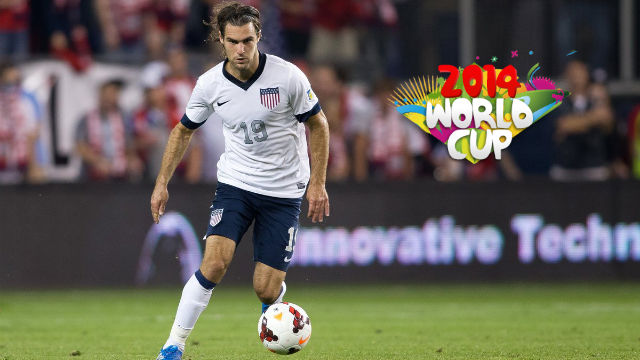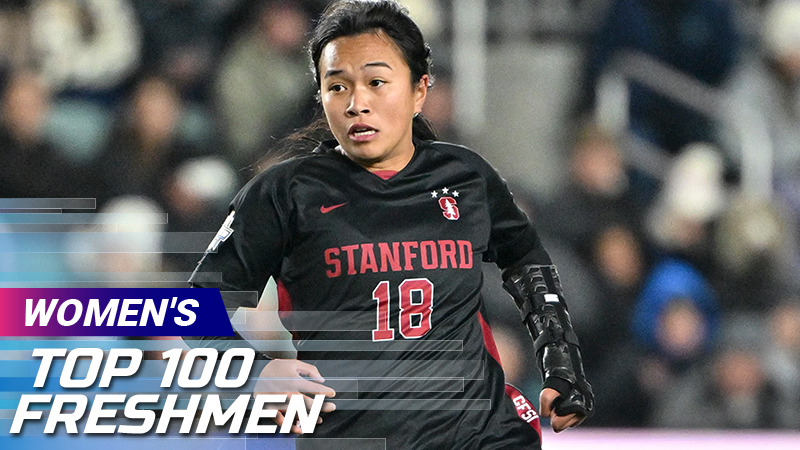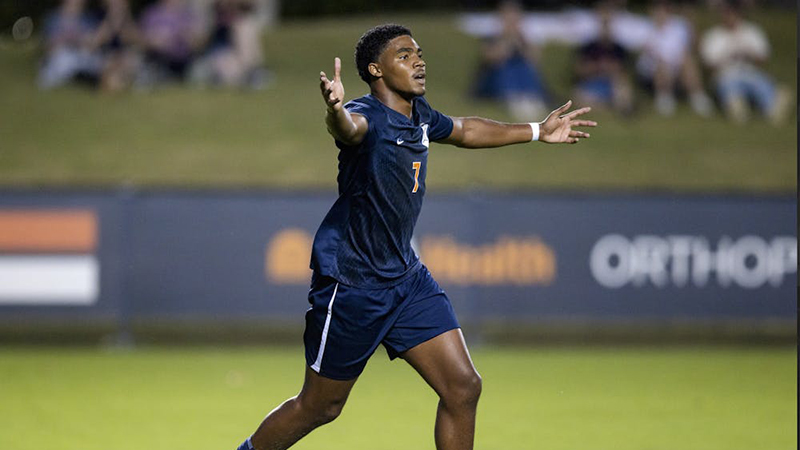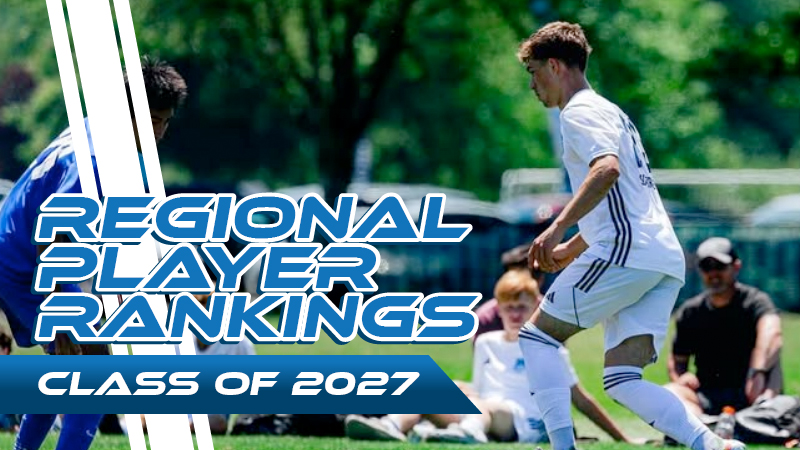Is college a viable path for MNT hopefuls?

Of the 23 U.S. players about to take on the world in Brazil, the roster can be wrenched into categorical development backgrounds.
There are the German-Americans, the offspring of at least one American parent, and all five rose through the rigorous ranks at a Bundesliga club. There are the college kids, well documented here having gone from club, to college, to the pros. Ten players from the college ranks made the final 23 man roster.
The remaining group consists of those who jumped straight from a youth team into the pro ranks in Major League Soccer, eventually finding his feet and carving out a career on either side of the Atlantic.
As the World Cup approaches, the timing is appropriate to raise the question: will college soccer remain a viable path to the U.S. men’s national team?
Head coach Jurgen Klinsmann doesn’t believe so. In an ESPN feature on the team’s German-Americans, he made clear his opinion of the college game.
“We have to make it clear our goal is that you go through the professional ranks as quickly as possible,” Klinsmann told ESPN’s Julie Foudy. “Here in the United States, the goal is to get a scholarship at a Division I school. They lose two, three, four years of their very intense development compared to a system in another country.”
There’s a hint of hypocrisy to that opinion, as Jurgen’s son Jonathan, involved in the U.S. U18 MNT setup, is committed to play college soccer at California in 2015.
Unsurprisingly, college coaches didn’t agree with Klinsmann’s assessment. To them, these aren't lost years.
“Great players are a product of two things: their environment and their commitment to becoming a great player, personal commitment,” Maryland head coach Sasho Cirvoski told TopDrawerSoccer.com. “I think colleges offer these guys a very good environment. It’s a little unbalanced, but in terms of the whole package, it’s a great environment. Those kids that want to be great, that want to have the chance to be professionals or have the chance to play for national teams can still get there through college, and have gotten there through college. Those that don’t want it badly enough aren’t going to get there, and you’ve seen that happen over and over again."
Said VCU head coach Dave Giffard: “Every player’s situation is uniquely different, and each player has different circumstances, they each develop at different rates, their background and environment are so tremendously different. We’re in an enormous country and you can have players in our country who are really talented and are a part of and even at the younger ages youth national team programs who are in wildly different environments week in and week out. To say that there is one path that is the right path for every player, I think that’s a little bit difficult to say.”
That aside, much of what Klinsmann says rings true, at least when stacking up the player pool and environments in the United States to the best of what the world has to offer. Everywhere else, players are battling their way through the youth ranks, fighting to reach their ultimate dream of becoming a professional soccer player. A system is in place that has been battle tested over the course of several decades in the cauldron of Europe.
However, the incredible youth system in Germany simply doesn’t exist here. The sheer size of the USA makes it costly, from both a money and time perspective, to gather the best players and pit them up against one another. For the most part, kids at the cusp of the age of 18 aren’t bypassing world class pro environments in their backyard to play college soccer. College athletic programs often have pristine facilities that are on par or in many times exceed what some MLS clubs offer their academies.
Major League Soccer has made admirable strides over the last ten years to carve out its niche at the crowded U.S. sports table, and slowly is starting to make contributions in youth development. But fast-tracking players into MLS and bypassing college doesn’t necessarily remain the best option. Playing time can be difficult to come by in the wringer of MLS, as coaches chase wins to preserve job security, and don’t necessarily offer young players time on the field.
The schedule may be abbreviated in the college ranks, but at least there are programs out there aiming to develop players and offer them a chance to compete in meaningful games.
“I think at the right school and right program, one, two, three, four years can only help certain kids, because every kid has a different way of developing and needs different things,” Akron head coach Jared Embick told TopDrawerSoccer.com. “I think if the MLS works together with the colleges, we can do the right thing for each player as long as communication is open. The college game has to continue to try and make adjustments to try and help develop players, create better situations for kids.”
College coaches aren’t ignoring these opinions either, and are working to make changes to the game at the Division I level that could make it a better option than it is at the moment. Talk of extending the season is a priority, along with revamping the substitution rule, at bare minimum.
On the other hand, some top players are taking notice of the need to jump at professional opportunities. Eight of the 20 players involved in the failed U.S. effort to qualify for the 2013 U17 World Cup already signed pro contracts. Elite players involved in MLS Academies do seem more prepared to jump at the chance of signing with the local club, though plenty still ship off to college.
But that could represent the exception rather than the rule, as some coaches note that oftentimes Development Academy club teams produce players who aren’t yet ready for college soccer, much less the pro ranks.
“I have seen over the last 15 years of [coaching college soccer], very few American players who would not benefit from a year or two of college,” Giffard said. “For not just on the field, but off the field. These are kids who for the most part have been living at home with their families, there’s a huge difference between playing for your school and playing for your pro team.”
Whether college soccer remains a viable path to the national team will come down to what MLS does to make itself the ideal destination for an 18-year-old. Can clubs offer discounted educations? Access to meaningful games? Do they have coaches that place an emphasis on development and winning?
The league made a significant move in the past year by signing a deal with USL Pro to offer up more playing avenues for some of the talent that doesn’t get time on the field. It’s still too early to judge that mechanism as a success or failure, and certain college environments still seem to be a better option for development purposes than the third division.
Embick, who coached U.S. and Seattle Sounders right back DeAndre Yedlin for two seasons in college, thinks that his rise to the World Cup roster showcases what DI soccer can offer a promising talent.
“I think DeAndre’s a great example of what we can do for one or two years,” Embick explained. “They have access to tremendous facilities, playing games that mean something and at a school like ours they play in front of crowds, on the road, at home, have to deal with expectations here. All those things you may not get in reserve games [in the pros]. You get the training but we can develop players physically, here at this level we’re focused on developing them as a person, you’ve got to grow up, become a little more emotionally stable, all those things also helped DeAndre.”
Whether or not Klinsmann’s opinions become truth is something only time – and to a smaller extent, Major League Soccer – will decide. It’s a drastic change of the development system that we probably won’t see anytime soon, given the amount of catching up the United States has to do with the rest of the world.

Headlines
- Recruiting Roundup: December 15-21
- How Do I Get Scouted by TopDrawerSoccer?
- 2026 Women's Division I Transfer Tracker
- Women's College Postseason Freshmen Top 100
- TDS Boys Regional Rankings: Class of 2027
- 2026 Major League Soccer Mock Draft
- Women's College Postseason Top 100 Players
-
Top MLS Academy Alumni Performances

-
MLS NEXT Fest: U15/16 Goal-Scoring Stars

-
Commitments: HS Star heads to Portland




